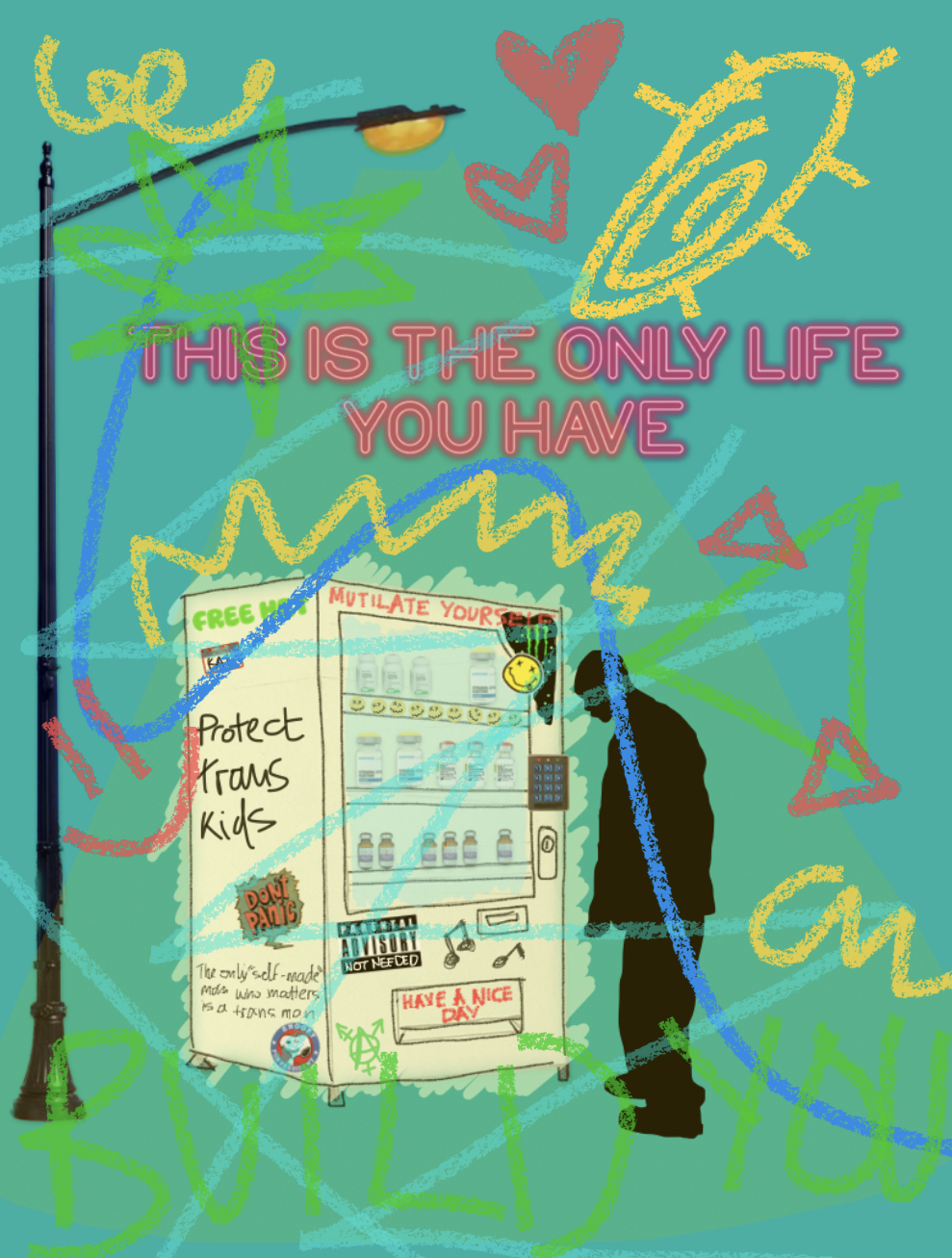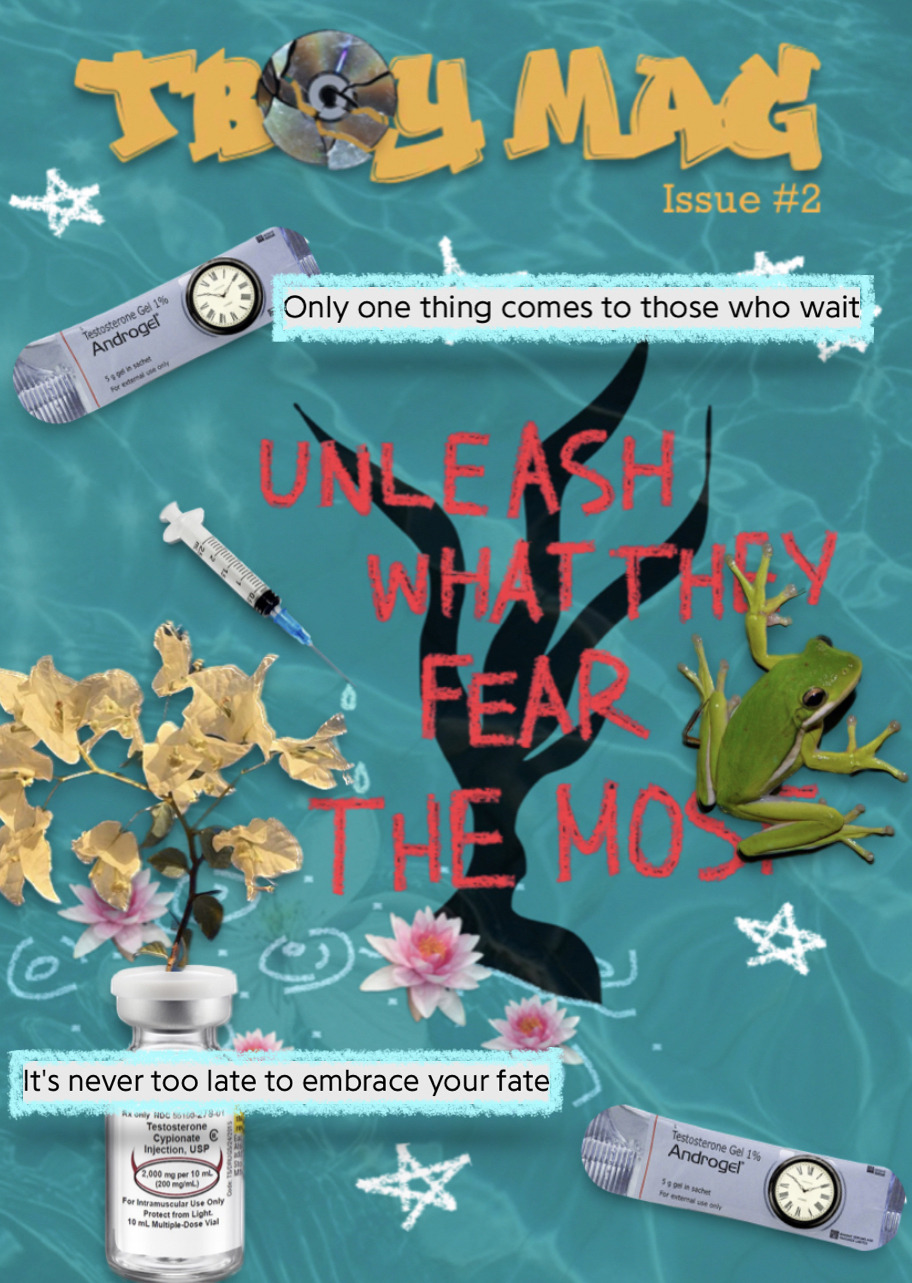
Cover, created by Logan (He/Him)
Tumblr: @ghostboyravenight
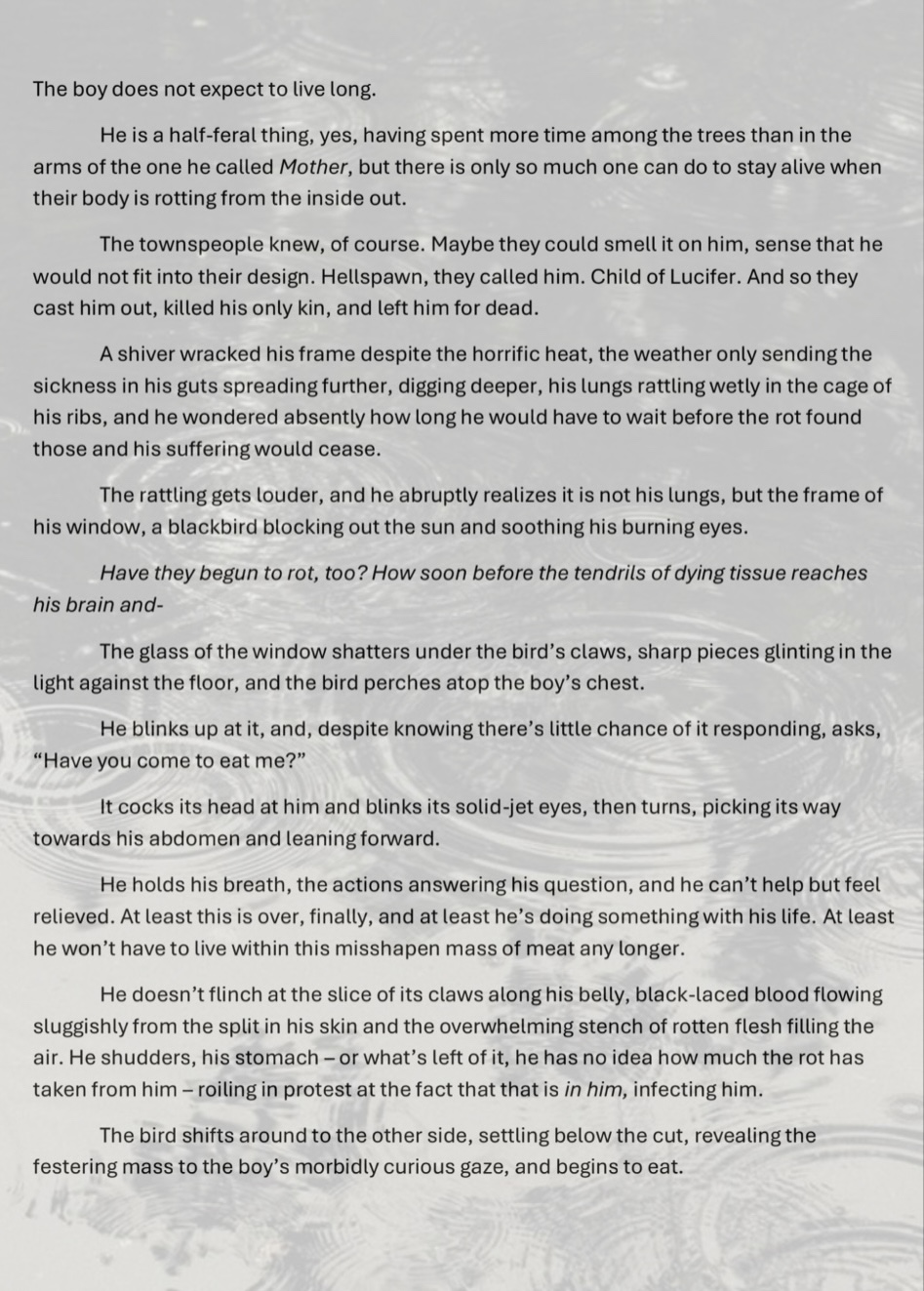
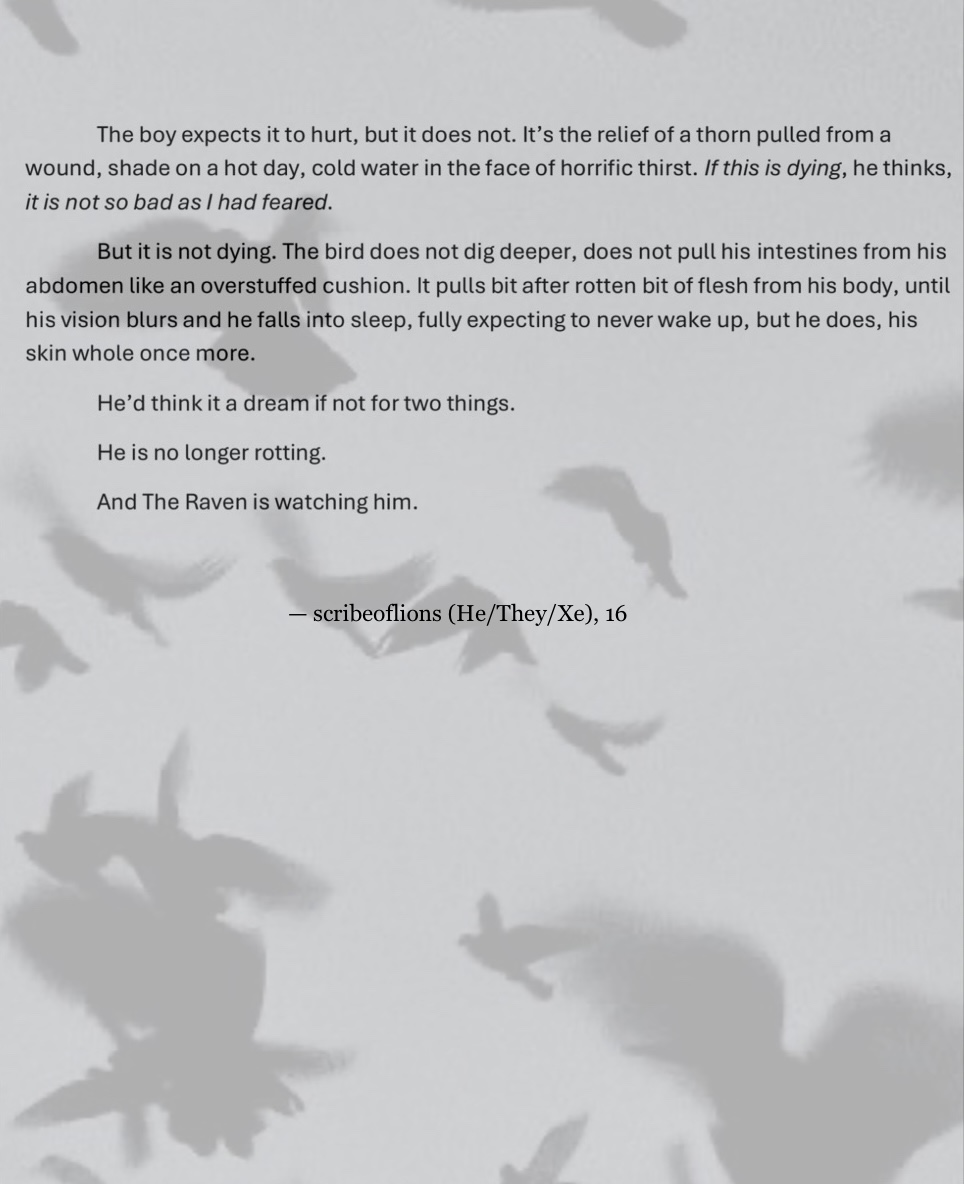
Pages 2-3, created by scribeoflions (He/They/Xe), 16
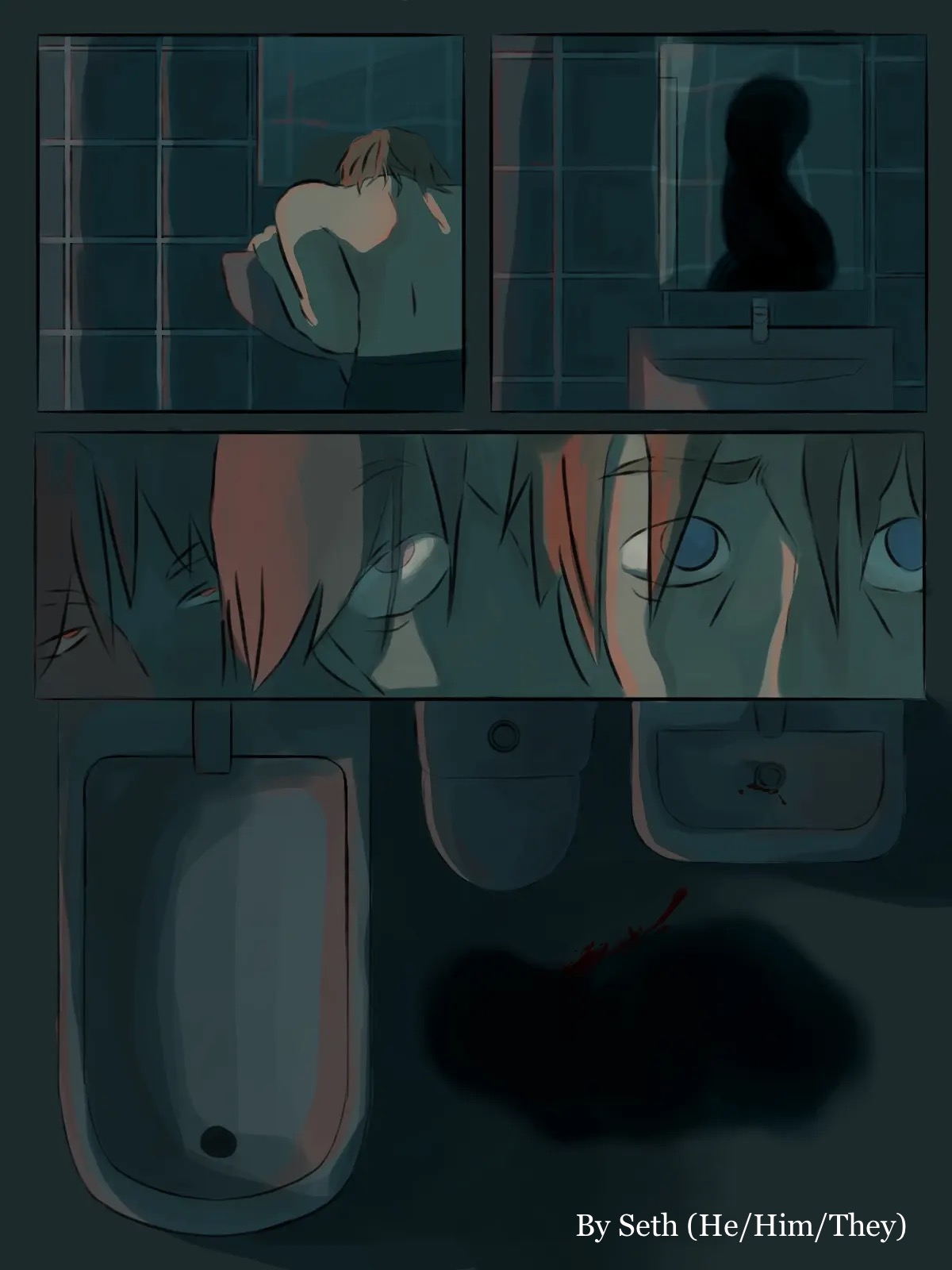
Page 4, created by Seth (He/Him/They)
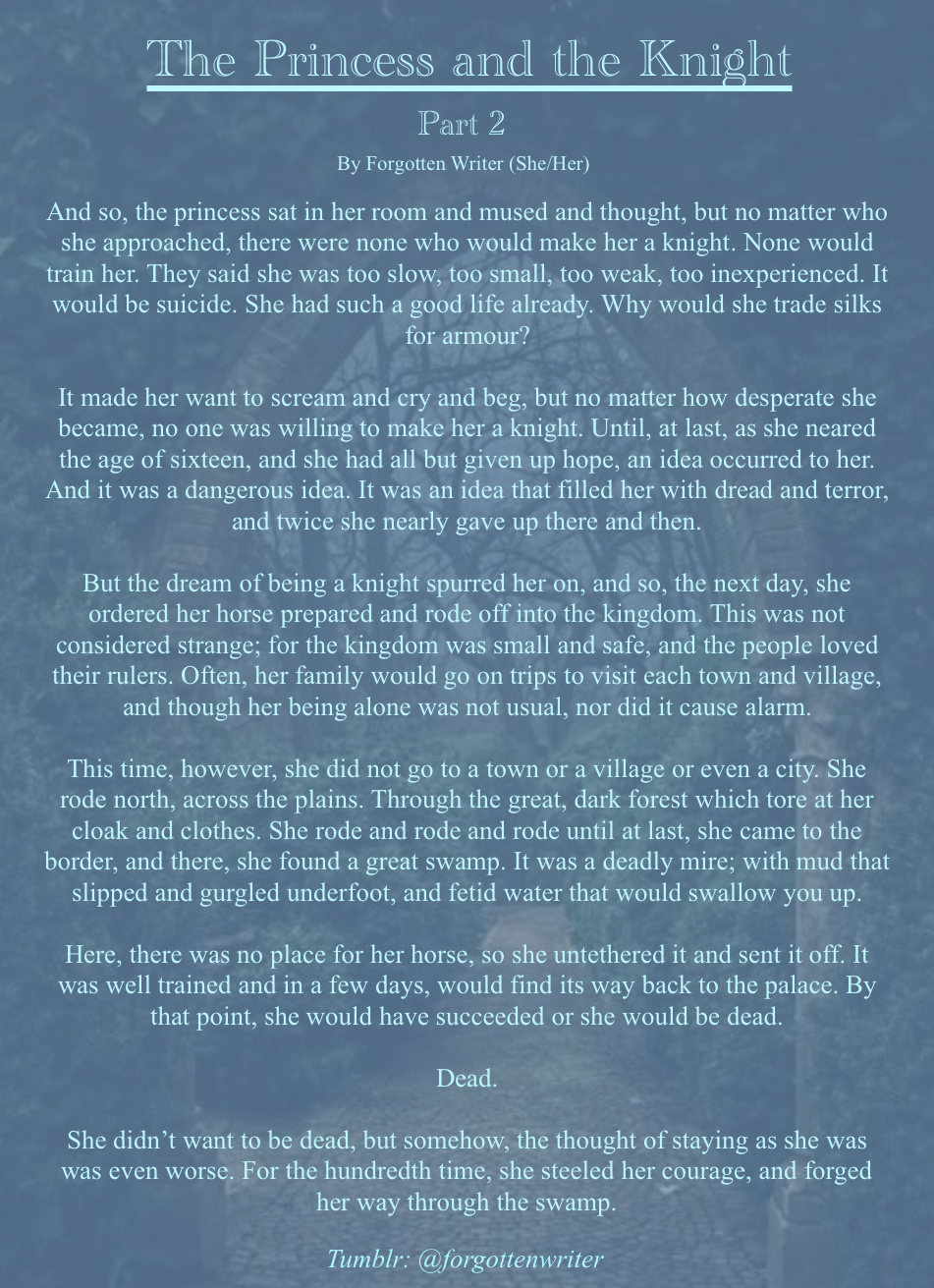
Page 5, written by Forgotten Writer (She/Her)
Tumblr: @forgottenwriter
![An image, tinted orange, of a bedroom window serves as the background for a poem written in black text. Outside the window, trees can be seen, and the window itself is half covered by the curtains on either side of it.
The poem is written on top of an orange square, helping to seperate the text from the background image. The title, written in larger, orange letters, reads “Orange Blanket” and is underlined.
The rest of the poem, in smaller, black writing, reads:
“maybe i just hadn’t noticed
but it felt like when i went under
every leaf on every tree shook itself free
- i woke up under an orange blanket
bleary eyed
watching autumn
through watered lens
it's the prettiest one yet
there's a metaphor somewhere here,
about letting things go,
and it washes over me in anaesthetic haze
windy street
leaves underfoot new boots, new chest
clothes that fit
i'm less in my own head
everything seems a bit sharper
drying up
a new prescription
carving me into the landscape
new form
metamorphosis
this year
i wrote a new body for myself
when i came to
i finally felt like i deserved it.” End Text]
At the bottom, in italic letters, the credits read “Iz Green (He/They), 23”](orange.jpeg)
Orange Blanket
maybe i just hadn't noticed but it felt like when i went under every leaf on every tree shook itself free - i woke up under an orange blanket
bleary eyed watching autumn through watered lens
it's the prettiest one yet there's a metaphor somewhere here, about letting things go, and it washes over me in anaesthetic haze
windy street leaves underfoot new boots, new chest clothes that fit
i'm less in my own head everything seems a bit sharper drying up a new prescription carving me into the landscape new form metamorphosis
this year i wrote a new body for myself
when i came to i finally felt like i deserved it
Page 6, written by Iz Green (He/They), 23
Instagram: @aspalax
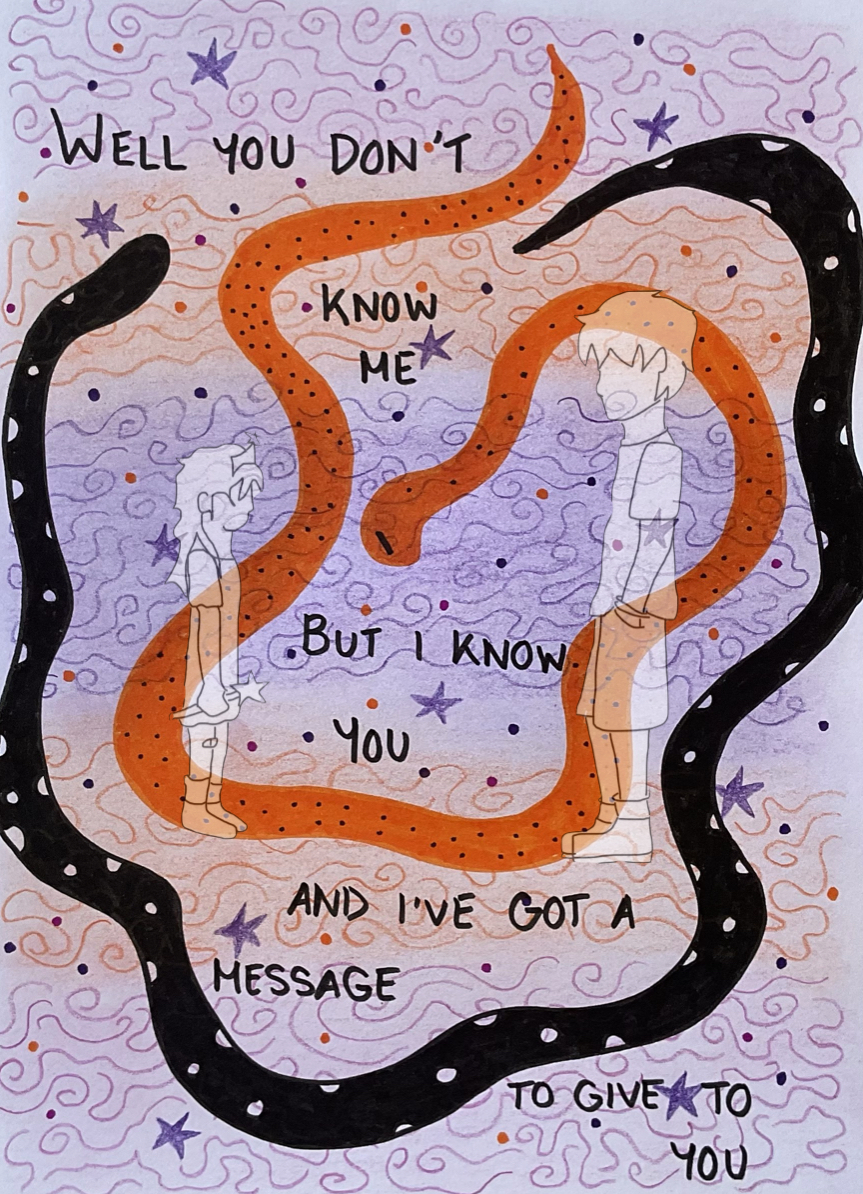
Page 7, created by Logan (He/Him)
Tumblr: @ghostboyravenight
![Image shows the floor of a kitchen. Cabinets are seen around the side, and the floor is carpeted with worn squares of different patterned carpet. The image has an orange tint to it.
In large, white writing, the title reads: “Beginner’s Tomato Pasta” and is underlined.
Below, in smaller writing, it reads:
“This is the first recipe I learned as a teenager, and the first recipe I’ll make when I move into my own place one day. For those of you who have moved out, left or been cut off from your homes without any decent cooking skills, here’s a recipe to start out with, as beginner friendly as possible :]” End text.
Near the bottom middle of the page, there is a real picture of a plate of pasta with a fork sticking out of it.](recipe1.jpeg)
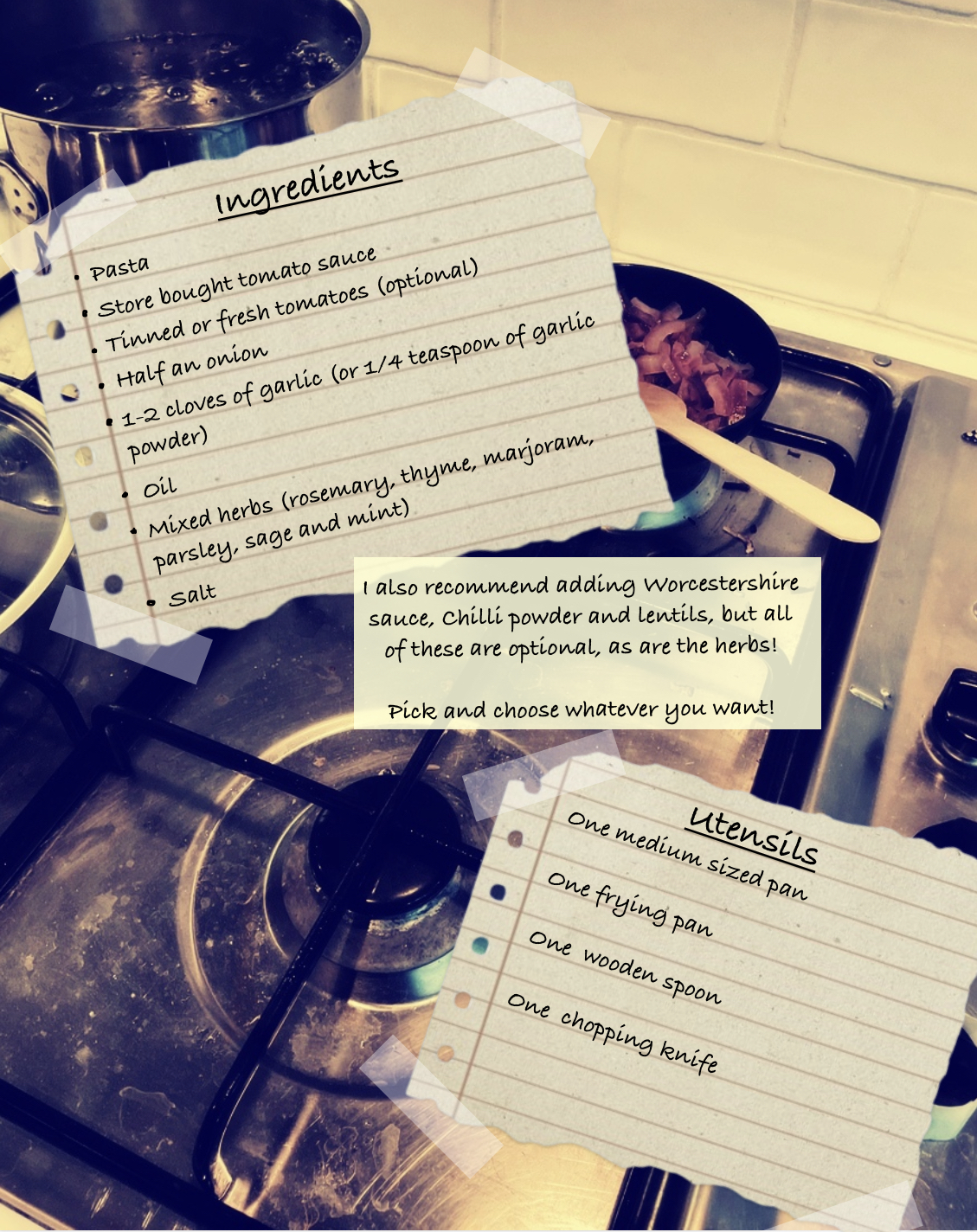
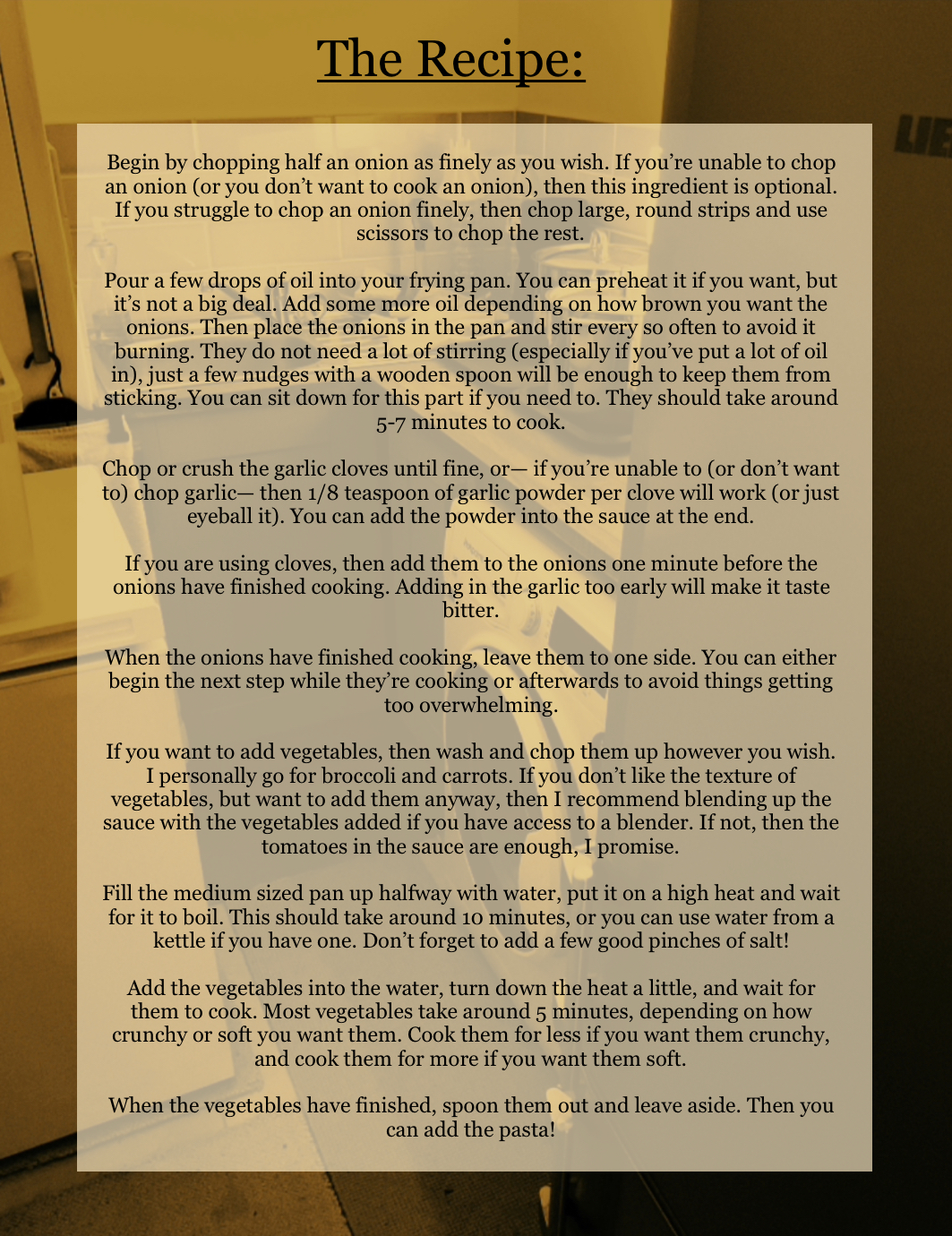
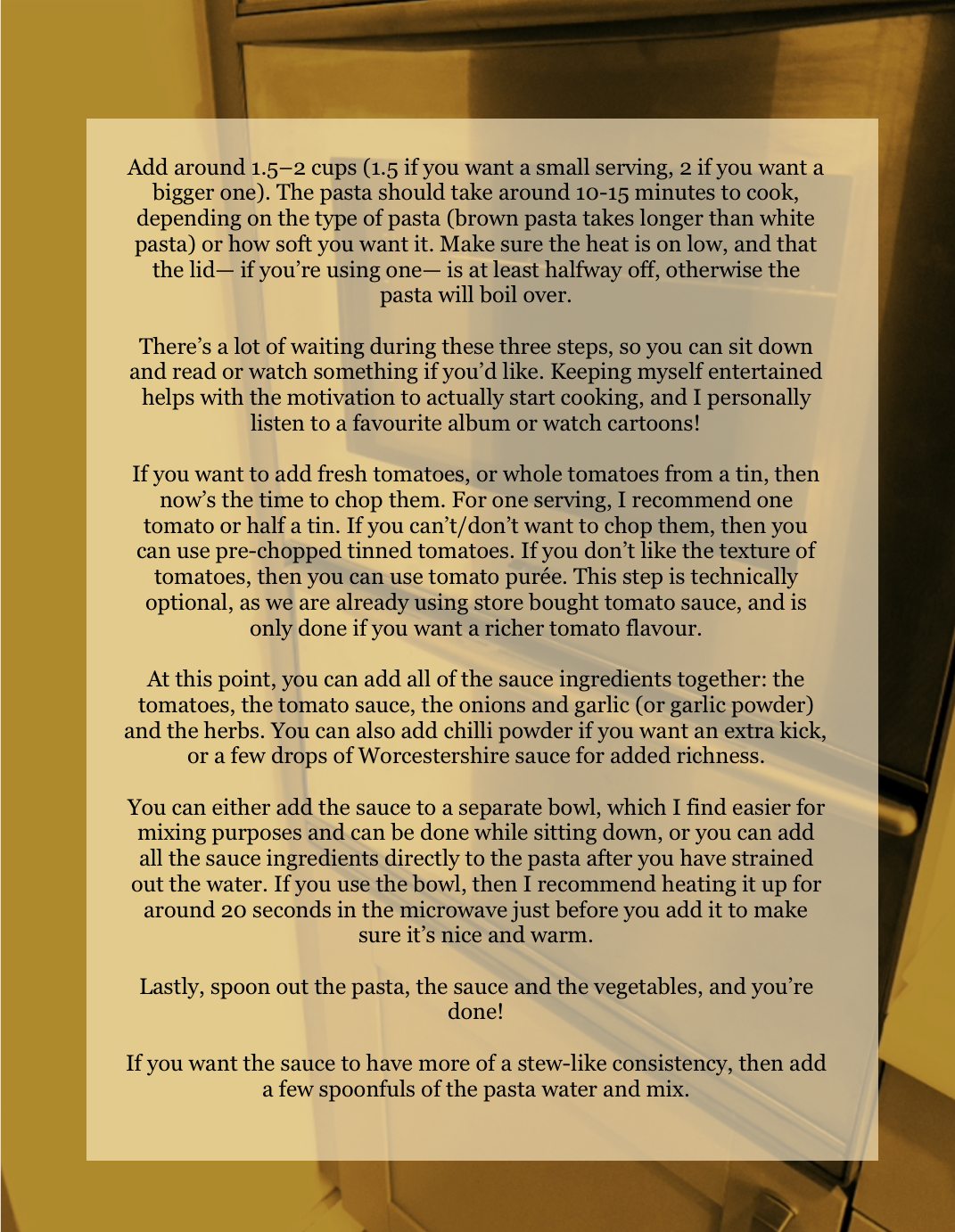
![An image of various kitchen utensils are shown, with a utensils carrier from the dishwasher filled to the brim with utensils and a flower-patterned radio being the most visible objects. This serves as a background to a yellow square that is used to seperate the text from the image.
The text reads:
“Remember to pick and choose which parts of the recipe you can/want to do! The most important thing is simply to eat, so feel free to peel this back to its bare bones if you need it. Boil some pasta for ten minutes while you watch TV and then dump half a bottle of sauce over it for a quick meal, or just eat the pasta if you don’t like the taste of tomatoes. At the very least, I hope I gave you some decent cooking tips if no one else did.
Happy cooking :]” End text.
Below, at the bottom of the page, is a real image of a masc-presenting white person (it’s me, the person is me) with their eyes crossed out and with their upper body outlined in white crayon. They are grinning and giving a peace sign.
There is an arrow pointed at them, with the words “knows how to cook two meals :3” in white, scrawly handwriting just above the arrow.
Around them are a few doodles, also in white crayon, such as stars and a smiley face.](recipe5.jpeg)
